The Apple iPhone 6s and iPhone 6s Plus Review
by Ryan Smith & Joshua Ho on November 2, 2015 8:00 AM EST- Posted in
- Smartphones
- Apple
- Mobile
- SoCs
- iPhone 6s
- iPhone 6s Plus
Final Words
The iPhone 6s in a lot of ways seems like it’s simple enough to review, but it turns out if you dig deep the changes have been significant. Over the course of a review, we’ve found major changes in the SoC, storage solution, camera, touch screen, fingerprint scanner, voice recognition software, cellular architecture, and WiFi chipset.
On the SoC side, it’s pretty safe to say that the A9 SoC is the best SoC in any phone today. We can talk about the TSMC and Samsung controversy, but at the end of the day regardless of which one you end up with the performance is going to be far and away better than anything else we’ve seen thus far. There are a lot of reasons for this, but at the end of the all that really matters is that the phone delivers the best user experience in areas where GPU or CPU performance is a gating factor. Again, I keep coming back to web browsing but due to the nature of wasteful yet necessary abstraction that occurs in websites and web applications it’s incredibly important that a high-end phone starts to challenge 2-in-1 and passively-cooled laptops in burst performance for a good user experience.
While CPU and strong browser optimization is critical for good web browsing performance, GPU is the other half of the equation to this SoC, even if it isn’t necessarily used to the fullest extent. The reality is that a high end phone is going to be used for gaming by a lot of people, and at the high-end gaming performance really needs to be impressive. The iPhone 6s’ are going to do well at this. GFXBench isn’t the same thing as an actual game, but the fact that the iPhone 6s and 6s Plus are basically pegging T-Rex at the maximum possible frame rate for most of a 3-4 hour infinite run of this intense benchmark basically means that gaming on the iPhone is going to be the best possible experience due to its incredibly high unthrottled GPU performance and the length of time that it’s able to sustain that unthrottled GPU performance. No other SoC I've tested this year can sustain this level of performance for this level of time.
The other truly impressive aspect of the iPhone 6s’ this generation is the storage solution. The iPhone’s storage solution here is ahead of everything else in the industry for three clear reasons. The first is the use of more advanced NAND organization. Although TLC NAND alone is going to be clearly worse for performance than SLC or MLC NAND, the iPhone 6s’ use SLC caching in conjunction with TLC NAND to improve storage performance in the situations that matter. The second is the use of PCI-Express to enable much higher bandwidths, which means that the SLC cache can really stretch its legs to reach the high levels of bandwidth that it’s capable of. The third is the use of a custom storage controller with NVM Express, which helps to realize the full benefits of PCI-Express. Overall, all of these things come together to make noticeable differences in user experience. Probably the most obvious example here would be iCloud backup and restore, along with app installs and updates. Burst photography and camera speed are also improved as a result of better storage.
The next upgrade worth discussing in the iPhone 6s lineup is the camera. The move to a 12MP rear camera was something that I personally was at least mildly skeptical of, but after testing the camera for myself I’m firmly convinced that Apple has managed to move to 12MP without noticeable degradation. The camera may not be sharper in most scenes, but the extra pixels enable 4K video recording, and it seems that this generation the improvements to video recording quality are enormous. On both iPhone 6s’, the addition of 4K video recording without random recording limitations, loss of image stabilization, or rapid overheating is surprisingly rare given the number of phones that support 4K video recording. The addition of 1080p120 slow motion video only magnifies just how far ahead Apple is in this segment when compared to Android smartphones. The iPhone 6s Plus also carries the rare distinction of having active OIS in video recording without the associated problems with jerky OIS behavior. The one disappointment here is that the iPhone 6s doesn’t have OIS, which increasingly feels like a pretty significant differentiator. Live Photos are also cool, even if at this point it remains to be seen if it will gain traction in the market.
The addition of 3D Touch to the iPhone 6s is probably something that seems like a gimmick on the surface, but after enough time with the iPhone 6s’ I can confidently say that this is probably one of the bigger changes to user interfaces in years. As-is, Apple has already managed to eliminate a lot of the friction that normally occurs with smartphone interaction when attempting to preview content without losing focus. However, going forward I can see significant changes in how people will interact with their phones. This isn’t really a revolution in the same way that the original iPhone is, but it’s a critical evolution step in the same way high-DPI displays were. I don’t think anyone is going to suffer greatly because their phone doesn’t have pressure sensitivity, but once you have this feature it’s hard to go back.
The second generation of TouchID isn’t quite as life-changing, but it’s a welcome improvement nonetheless. Again, this is a case where there was friction in the user experience that wasn’t really noticeable until it was gone. Obviously, Apple is no longer the only one at this level of user experience with fingerprint scanners but they are keeping up. The addition of always-on Siri is similar to TouchID in that regard, as while it isn’t life-changing it is a welcome improvement. The amount of polish in the personalized voice recognition is also impressive to see in action, and something that isn’t necessarily present in every implementation of always-on voice recognition that I’ve seen.
The sort of finishing touches to the iPhone 6s are the improvements to the cellular modem and WiFi chipset. The upgrade to Qualcomm’s MDM9x35 Gobi modem helps to improve power efficiency along with moving the iPhone 6s to UE Category 6 compatibility for LTE. The move to Broadcom’s BCM4350 WiFi/BT combo chipset enables 2x2 802.11ac, which means better range and throughput for routers that support MIMO.
Overall, after spending all this time with the iPhone 6s I can’t find anything really wrong with this phone. On the contrary, the A9 SoC is a huge jump in performance even relative to other SoCs on the same process node to give impressive application performance. The storage solution is unlike anything else in mobile that I’ve seen so far. The camera’s overall user experience is just about the best that you can get on the market. 3D Touch is a big improvement in user experience, while TouchID v2 and always-on Siri are worthwhile improvements in user experience. The only real issues I can think of are that the iPhone 6s doesn’t have OIS and that the base SKU is still 16GB of storage. To be fair, the 16GB SKU can become a noticeable user experience issue if you're constantly dealing with the limits of this storage, and the jump from 16 to 64 GB feels like it's simply designed to encourage buying a more expensive SKU. There are arguments that users that don't really take a ton of photos or videos and stream all their media will be fine, but it's still a user experience problem in this day and age. However, despite these issues I would argue that the iPhone 6s’ are the best phones you can buy today.
Of course, this sounds like a rather hollow recommendation to those that have followed our reviews for the past year. This year, more than ever it feels like Android smartphones at the high end have stood still, as if smartphone improvements have become a zero sum game. To make the best phone this year is therefore a pretty low bar to clear. However, the iPhone 6s, even when compared to iPhones alone, is especially noteworthy for the improvements to overall user experience.
On top of being a great smartphone in the same vein as previous smartphones, the addition of 3D Touch is a big deal. The idea of having additional interactions on top of a traditional touch screen is not a new idea. Samsung has tried the same before with Air View. However, what matters here is that the implementation is novel and useful in a way that other implementations weren't. 3D Touch manages to work because there's no need to hover a finger over a single link for half a second and rather than a single potential extra action there are a whole range of potential additional interactions that can be pressure-based. Zooming in and out on a browser could be done by pressure to greatly improve the user experience on desktop-only websites instead of constantly pinching in and out to read various parts of the page. AE/AF locking through increased pressure rather than a long press, more sophisticated gaming controls, and other applications have yet to be realized, but just the ability to preview web pages, messages, emails, and other content is a significant change in how I use a phone from day to day. Instead of constantly tapping and then immediately swiping back on emails and messages, it's much faster and more convenient to quickly press down on a single email to preview the first paragraph or so before moving on to the next just by letting go of the display. OEMs and SoC vendors often speak in platitudes about how user experience matters but 3D Touch is probably the first case where the user experience is visibly improved in a very real way.

In light of these factors, I would give the iPhone 6s line the Editors’ Choice Gold award. Looking back on the phone that has received this award in the past, I believe that the criteria for this award is such that a product is not only one of the best in its category and an extremely good product in a vacuum, but pushes the smartphone user experience forward in significant ways. The iPhone 6s isn't a perfect phone, but to receive the second highest award I don't believe it's necessary to make a "perfect" phone. There are areas that could be improved, but nothing that I believe is a significant detriment to the phone.


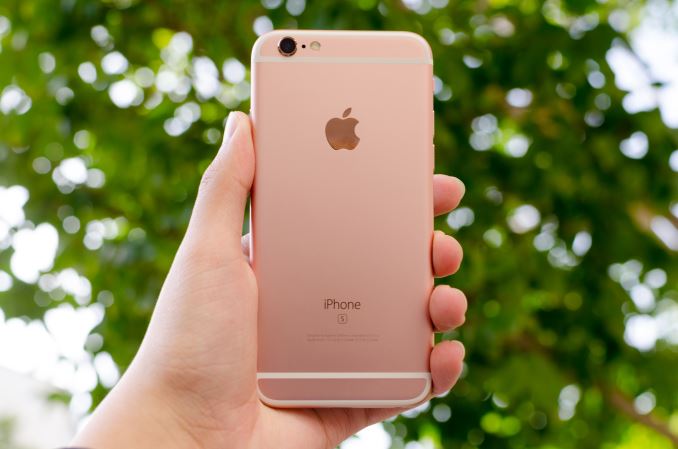
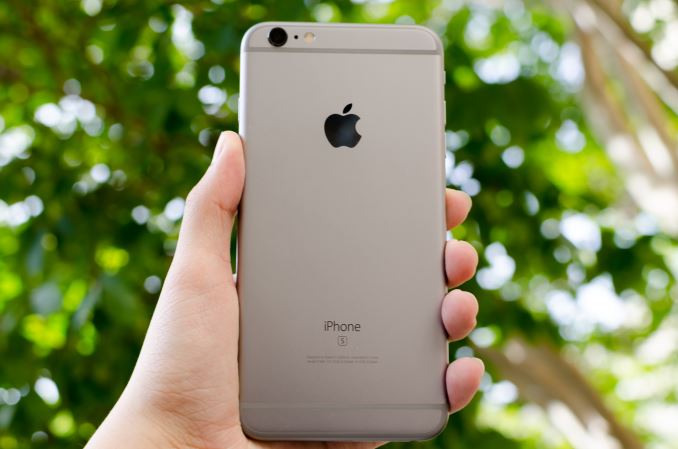
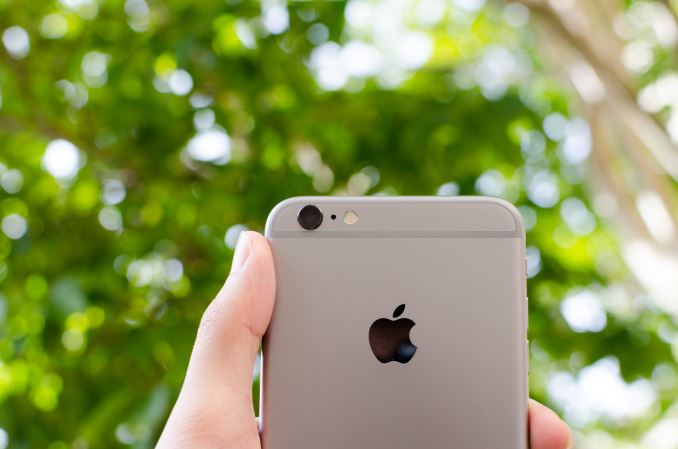
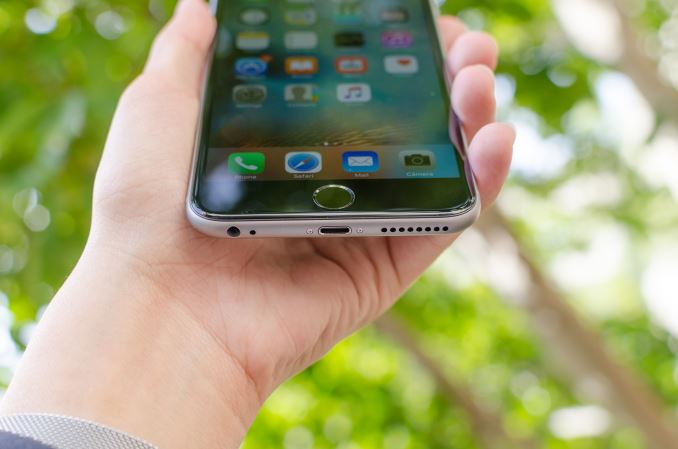
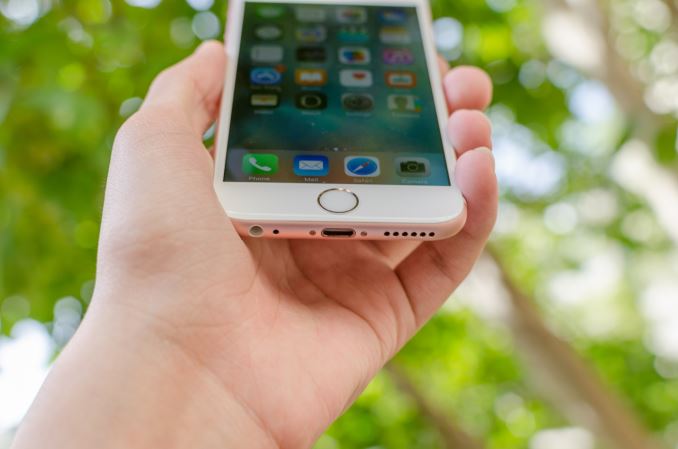
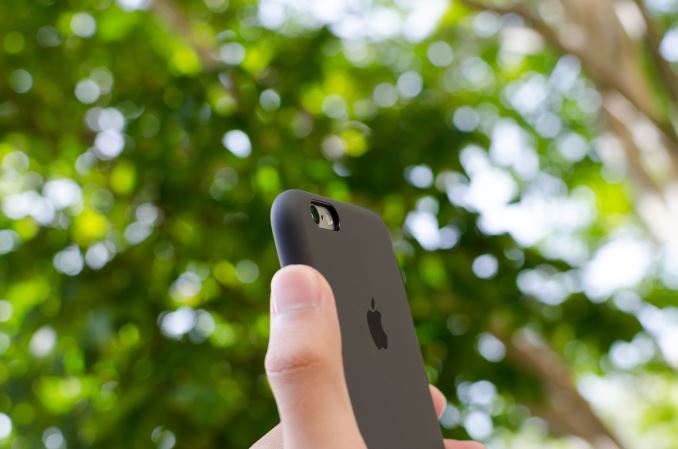
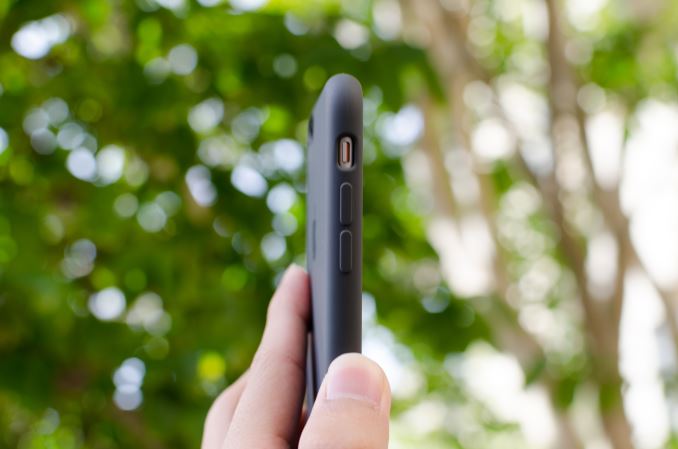








531 Comments
View All Comments
akdj - Tuesday, November 3, 2015 - link
Hi Josh and Ryan,Many, MANY thanks for the insight and in depth review. I've just finished my second read (it was late last night I noticed the review and read through) and your experiences mimic mine. With a single exception. I'm a business owner, have been over 26 years now and use phones for the business and personal. I also outfit employees so I have a chance to stay 'ambidextrous', keeping a foot in Android, rest of the body in iOS ... But some things I do enjoy on both my older Note 4, & newer S6. No intrigue with the Note 5 other than its SoC, speed of internal storage and design over my older N4. As an S6 Edge owner I'm well aware of the speeds uninstalling, installing apps, opening them, the 'feel" of the newer 2015 Sammy phones as well as the exceptional speed of the Exynos processor. That said, you made a remark I don't quite agree with
"The second generation of TouchID isn’t quite as life-changing, but it’s a welcome improvement nonetheless. Again, this is a case where there was friction in the user experience that wasn’t really noticeable until it was gone. Obviously, Apple is no longer the only one at this level of user experience with fingerprint scanners but they are keeping up."
I'm not sure which phone you've found that parities the iPhone 6s/6+s for FP register. As it's certainly not the S6/S6+/Note 5 or LG (I've got one of their freebie 8" LG tabs from AT&T runnin LP). I'm hoping anyway lol. My silly S6 is just finally starting to correctly register 50% of the time with the 5.1 update. The previous six months I was lucky to have my thumb recognized 1 of 5 times. And it's registered as FOUR different 'fingers'.
I'm also an owner of the 6+s and even checking the time or setting an Altman, turning the flashlight on, etc...it's so damn quick, I'm automatically on the home screen. It's ...pardon the pun, lightning fast and immediate. I guess I'm curious as to which OEM Apple is keeping up with as I had the 5s and 6+ standard as well. The Note 4 is a useless implementation and the S6, while better is a LONG way off from 'keeping up with...' Apple again IMHO. Genuinely curious as to the OEM making better or even similar performing and 'protective' measures than Apple.
Other than that silly nitpick, I agree completely and haven't enjoyed an iPhone as much since the iPhone 4 and its HiDPI display. If I recall, another 'first', wasn't it? (Like the 5s FP reader, actually able to 'read an FP ;)). Maybe it's my aging mid 40s eyes but the higher resolutions and larger displays have literally kept pace with my deteriorating vision!
Once again, many thanks for the perfectly balanced nerd/everyday 'Joe n Jane' subjective review of 'real world use'. Always refreshing to hear... I mean read your reviews, un-rushed to keep up with the herds the day after release or a week post NDA, minus the carrying around and using ...or simple resolution, 100% 'chart n number' reviews.
Loved it. And I'm loving the iPhone 6s+. It's truly a computer in my pocket. I know you briefly touched on the expanded radios both WiFi and LTE, another maybe at first unnoticeable unless ...again as you mention an iCloud restoration of significant size, but a HUGE end user boon. These are incredibly fast, seemingly more 'stable' in 5MHz mode. (Maybe a bad word, stable but hard to put my finger on it, as older modems on the iPhone with AC/5MHz or is it GHz? Now I'm lost. This one seems faster, more efficient and stable than earlier versions )
My wife has an identical iPhone 6+s. 128. Hers is Sammy mine TSMC. Neither has shown any significance in battery draw than the other. Mine measures 2238/4437 in GBench, hers 2242/4405 after six runs ...that's the mean. Power and efficiency are nearly identical after a weekend at our cabin we both had single digit %'s and used them nearly the same the entire weekend.
Very VERY great phone
J
MarcSP - Wednesday, November 4, 2015 - link
Thanks for your explanation :-). Still, I think there must be something else. I mean, most Samsung phones also use amoled and did not get such a low score in browsing, and the Snapdragon 800 is not a very slow SoC. Even today there are many low and even middle-end phones sold with weaker SoC.zodiacfml - Wednesday, November 4, 2015 - link
i dont like apple but their engineering and design is very impressive. i wonder how the new cpu compares to a Core M.tharun118 - Wednesday, November 4, 2015 - link
The best phone? Seriously? I've seen a lot of people saying iPhone as THE BEST phone, but AnandTech? Come on.. I believe that there can never be a "THE BEST phone". Yes, iPhone 6+ has a very good SoC, reliable camera, 3D Touch, etc, but like every flagship phone, there are compromises and drawbacks. For me, I choose a smartphone based on 4 major aspects. First, the screen. I know Apple lovers always defend their 320+ PPI screen saying that's more than enough and they don't need anything more. But the truth is, they are far behind Samsung and that will likely change in 7 or 7s. Second, the camera, this is purely subjective, there are people who'd prefer photos from an iPhone and there are people who'd prefer photos from 2015 android flagships (S6, Note 5, G4, 6P, etc). Third, battery and performance: Apple is better here on a tiny margin due their vertical integration. I think Android phones will never reach the exact smoothness in performance and efficiency in power consumption of the latest iPhone, due to fragmentation. Fourth, customisation: No comments here, but I understand there are lots of people who'd happily use their phone the way their manufacture tells them to. I'm definitely not one among them. I try to balance all these 4 aspects and my choice this year was a Galaxy S6. Of course, there are bonus features such as, wireless charging, quick charge (very useful), IR port, etc. But still, I wouldn't call S6 as THE BEST. Neither is an iPhone 6+.Vincog - Wednesday, November 4, 2015 - link
I got iphone 6S with samsung chip here, and my battery will decrease 1% every 5 minute in use or 1% every 15 minute standby... ( take a note all background refresh off, location off, only hey siri on ) ..Even my iphone 5s is more better than this one!! 😭😭😭😭Tigran - Wednesday, November 4, 2015 - link
***Looking at GFXBench, which is an infinite loop of the T-Rex on-screen benchmark to approximate intensive video gaming we see that the iPhone 6s doesn’t last very long either, but the performance throughout the test is incredible. Due to 1334x750 display resolution and strong GPU, the iPhone 6s manages to last the entire test without any notable throttling, and effectively pegged at the refresh rate of the display.
***
Why V-Sync (which limits T-Rex on-screen by 60 fps) is ignored? And what about this throttling evidence (by 20-22% in GFXBench off-screen):
http://forums.anandtech.com/showpost.php?p=3772777...
blackcrayon - Wednesday, November 4, 2015 - link
They mentioned that the 6s+ throttled slightly due to the higher resolution, so it stands to reason that the 6 would also throttle when rendering a higher resolution offscreen. But it's nowhere near the throttling of any of the competitors, games are still remaining playable throughout a reasonable gaming session.Tigran - Wednesday, November 4, 2015 - link
You don't get it. It's not about resolution - it's about T-Rex on-screen which limits performance to 60 fps. Without this limit iPhone 6s performance would be much higher, so it is incorrect to mention T-Rex on-screen discussing iPhone 6s throttling. If there is throttling, it can decrease from 100 to 70 fps, but you will see only 60 fps during the whole test - because of V-Sync. And there is evidence off throttling in Manhattan (which doesn't reach 60 fps limit) actually - see my link above (20-22% throttling). I can add that popular Russian laboratory (overclockers.ru) tested throttling of iPhone 6s via Basemark Metal, and they found enormous throttling there - from 911 down to 525 (74%).zhiliangh - Wednesday, November 4, 2015 - link
Thank you! I have been waiting for your review before upgrading any phone this year. This is a must-read iphone review.Spunjji - Wednesday, November 4, 2015 - link
I have a bit of a gripe regarding the conclusions in the camera section. The LG G4 is clearly providing better images at night than the iPhone 6s and 6s Plus - granted there is "less motion blur" in the Apple images, but they're also quite clearly underexposed by at least a stop. It therefore seems odd to conclude that a product which produces grainier, less-detailed and murkier images than the competition is better. You could produce similarly non-blurry results on the G4 by adjusting exposure compensation and then have the best of both worlds!